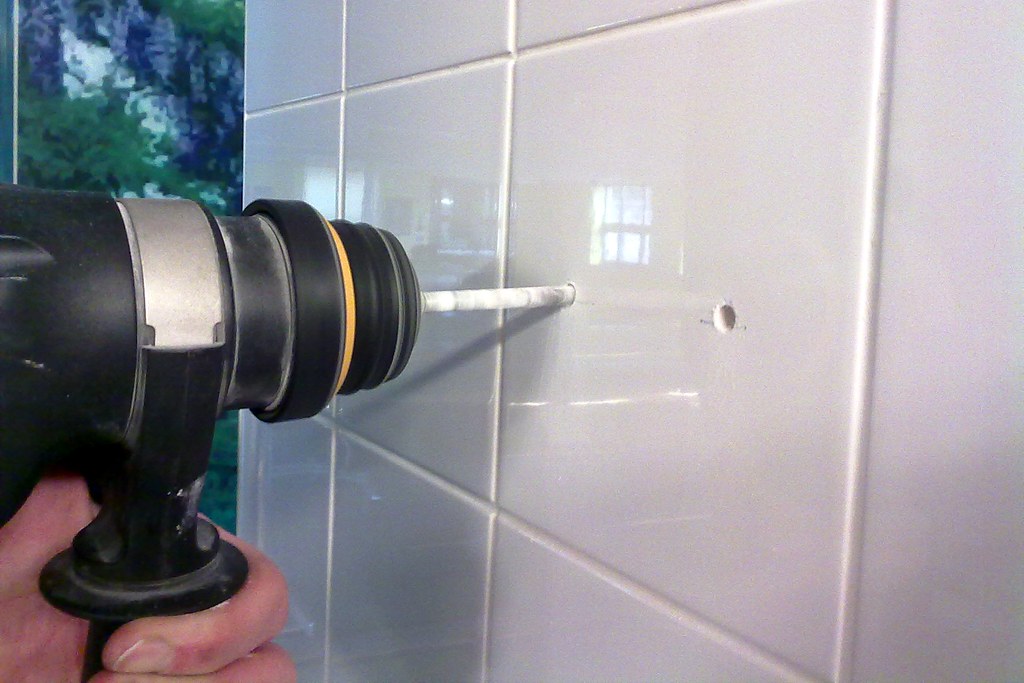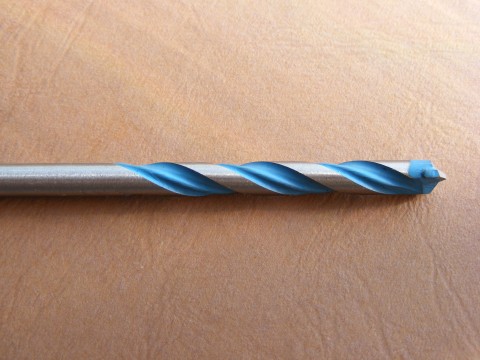
Like most of us, you have to do small jobs for which a professional is not indispensable: hanging up a shelf, painting a room in the house, assembling and dismantling furniture kits, ect. Even if you are a novice, there is no need to be afraid as the following 8 tips will help you carry out small projects at home.
Drilling tiles
Your bathroom and kitchen need shelves, towel racks, brackets, and various accessories, and you need to drill into the tiles. But how do you drill into tiles or ceramic without breaking or splitting the substrate?
In this post, you will learn how to:
– Choose the right material to drill into tiles
– Drill a thin tile before laying
– Drill a thick tile before laying
– Drill holes in already laid tiles
– Use a hole saw
It is possible to drill into tiles before or after installation, provided that the right material is used not to damage them.
The risk when drilling a tile is that it may crack or burst. To reduce this risk, it is preferable to drill the tile before laying it, when possible.
Choosing the right tile drilling material
The main risk when drilling a tile is that it will crack or break. It is, therefore, essential to have the right equipment.
Choosing the right drill
To drill into tiles without the risk of breaking them, you must proceed slowly and gradually increase the drilling speed. Ideally, it would help if you used a drill with an electronic variable speed drive that gradually controls the drilling speed.
If you do not have a drill with electronic speed control, choose the slowest speed for drilling the tiles.
The choice of drill bits: tile drills

Tile drills allow you to drill into the tile without damaging or scratching it. There are drills of different diameters.
Drilling a thin tile before installation
Some tiles may need to be drilled before installation, so be sure to follow specific steps not to damage the tiles:
– Place the tile to be drilled on a wooden board; it will absorb the drill’s vibrations.
– On the glazed side, mark the point to be drilled with a felt pen.
– Place a piece of transparent adhesive on the spot to be drilled. The adhesive prevents the drill from slipping on the tile.
– Equip the drill with a tile drill bit of the desired diameter.
– Drill slowly at first.
– Gradually increase the speed of the drill once you have cut through the glaze.
Do not use the percussion function of your drill.
Drilling a thick tile before laying
If you are drilling a hole in a thick tile, it is better to use a powerful drill:
– Place the tile on a wooden board that will absorb the vibrations of the drill.
– Mark the point to be drilled on both sides of the tile.
– Drill the tile on the side of the enamel to about a third of the way through.
– Turn the tile over and finish drilling on the other side.
– Always drill slowly at first and then gradually increase the speed of the drill.
Drilling through previously laid tiles
The main risk is that the tile may burst during drilling. It is best to use a drill with an electronic variable speed drive.
Proceed as follows:
– Mark the point to be drilled with a felt pen.
– Cover the area to be drilled with transparent adhesive tape: this will prevent the drill bit from slipping and prevent the glaze from chipping off the tile.
– Equip your drill with a tile drill bit.
– Drill slowly at first and then gradually accelerate once you have cut through the glaze and the tile.
– Once the tile has been drilled, clean the residue with a vacuum cleaner.
– Change the drill bit for a bit adapted to the wall (concrete, wood, plaster…), then drill the wall. Choose a drill bit of the same size or slightly smaller than the tile drill you used.
– Insert a dowel in the hole.
Caution: Remember to wear protective goggles.
Using a hole saw
If you want to drill a hole with a large diameter, use a powerful drill with a “tile saw.”
It is preferable to drill large diameter holes in tiles before laying them. However, you can do this on tiles that have already been laid. In both cases, the steps are practically the same:
– Locate the point to be drilled on your tile.
– If it is not already glued, place it on a plank before drilling.
– Cover the area to be drilled with transparent tape so that the hole saw does not slip.
– Drill slowly at first and then accelerate gradually, do not use the percussion function of the drill.
Note: To drill a loose tile accurately, use a drill press.
Your tile is now perfectly drilled without damage. If, after a while, the hole you drilled in the tile is no longer needed, you can fill it up with special colored cement, which will blend in with the tile’s color.
Hope the above helps you out. Remember to share your experience in the comment section below.











